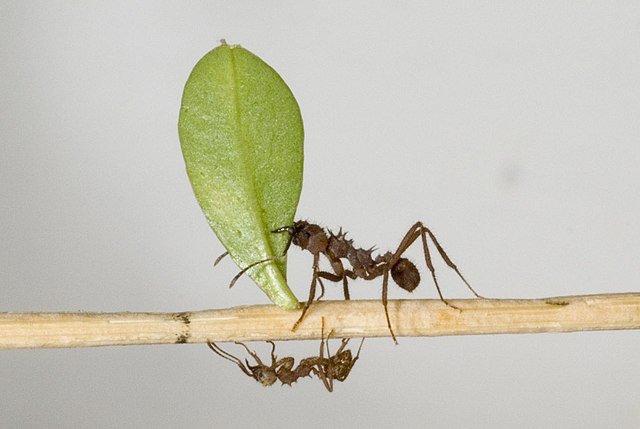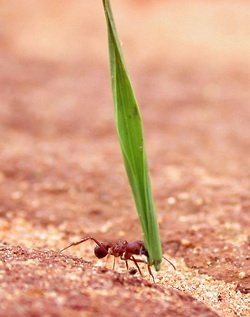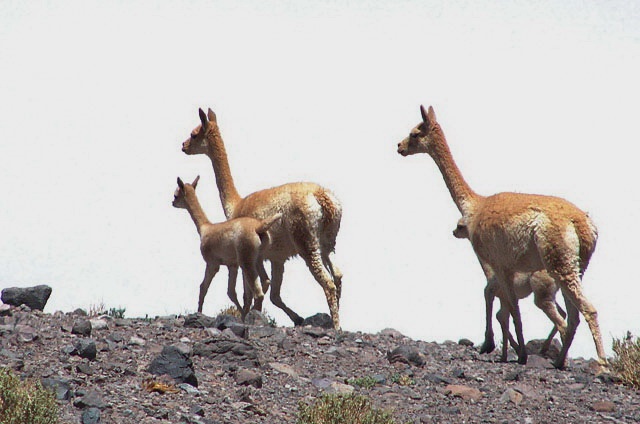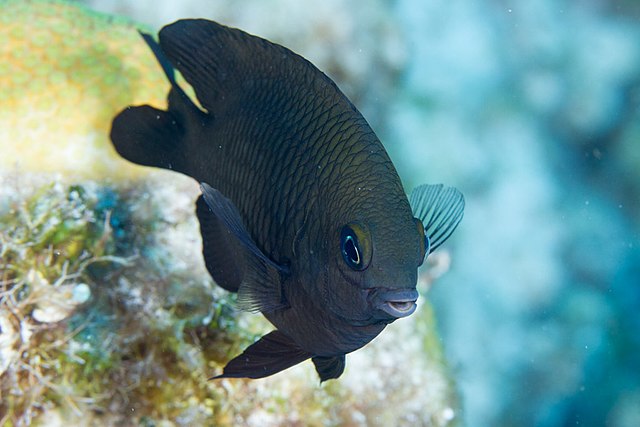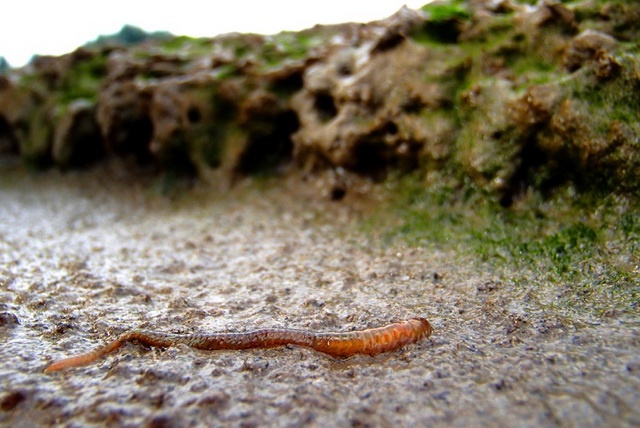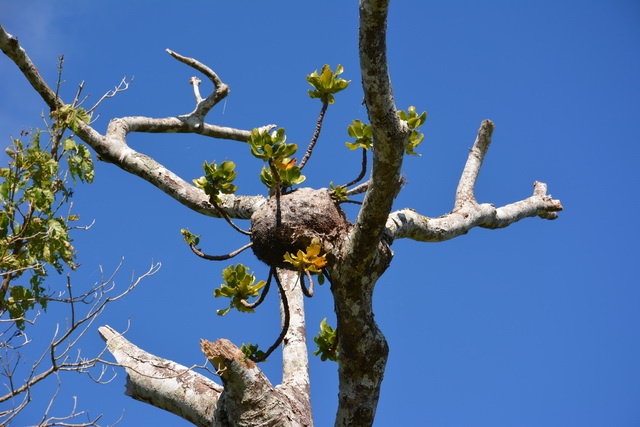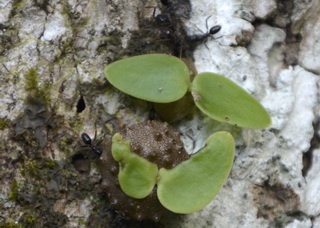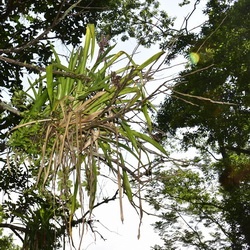The first fungus gardens, adaptations, and innovations
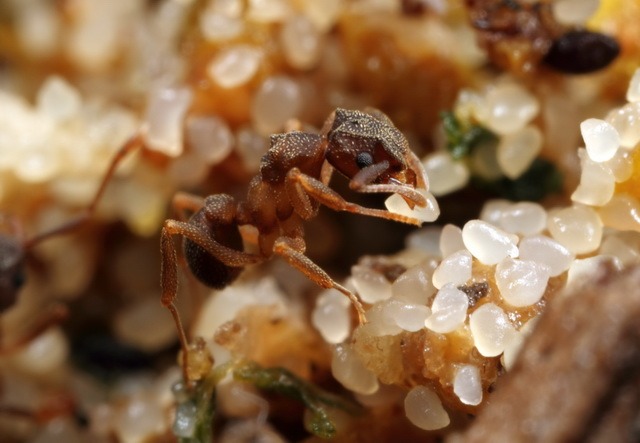
Ted Schultz and colleagues link the emergence of ant farming to an asteroid impact and the domestication of the fungal crop to a period of strong climate change.
You can forage for food, but you can also grow it to make sure it is available. About 250 species of ants from South, Central, and North America do the latter, growing a fungus in their nests for food. The evolutionary history of this ant-fungus relationship was largely known. Now, Ted Schultz and colleagues compare the evolutionary tree of fungus-growing ants with that of cultivated fungus varieties and refine the picture.
It is fascinating how they link the history of ant farming to two major events on Earth.
Pioneers
The fungus-growing ants have a common ancestor that started agriculture. This happened 66 million years ago in wet tropical forests of South America. Shortly before that, an asteroid had hit Chicxulub in Mexico with enormous consequences. Dust in the atmosphere blocked sunlight for months, plants died and many species of plants and animals, including dinosaurs, became extinct.
But fungi that live on dead material, such as fallen leaves, flourished, and some ants took advantage of this. They could not digest organic material themselves, but they allowed a mushroom-like fungus that could do the job to grow in their nest by providing it with detritus. The fungus broke down the material, and the ants consumed breakdown products as well as fungus. All 250 species of ants that currently have a fungus garden in their nest descend from these pioneers.
Soon, ants picked up a second mushroom-like fungus. Virtually all cultivated fungus varieties today – and there are several hundred of them – descend from these two early crops.
Domestication
From the beginning, the farming ants could not do without their crops; they would starve. But conversely, the fungi did not need the ants. They also lived outside ant nests, and fungal crops exchanged genetic material with their wild relatives. Outside they formed mushrooms, within ant nests the ants prevented this and only allowed fungal threads to grow. This is known as lower ant agriculture. Today, roughly a hundred species of ants exist that practice lower farming, with many semi-wild fungal varieties.
But it did not stop there. At some point, there were ants that domesticated their crop. That means that the cultivated fungus became dependent on the grower and can no longer live in the wild. And it produces nutrient-rich food bodies especially for the ants, the so-called gongylidia. These ants and their fungi are inseparable, and a young queen that wants to establish her own colony does not leave the maternal nest without a piece of fungus garden between her jaws. This is called higher ant agriculture.
This agricultural transition only occurred when lower ant agriculture had already existed for 36 million years, now about 27 million years ago. Why didn’t it happen earlier, and why did it suddenly happen then?
Global cooling
The researchers point at the so-called Terminal Eocene Event 33.5 million years ago that preceded the transition. The Earth cooled down rapidly and many species became extinct, although the extinction was not as massive as 66 million years ago. In South America, part of the wet tropical forests made way for landscapes that were seasonally dry, such as savannas.
Some of the fungus-farming ants moved to drier areas. The fungi in their nests retained the same growing conditions, but they lost contact with wild relatives, which lived in wet forests only. Because the cultivated fungi no longer exchanged genetic material with their wild relatives, the ants could select freely for characteristics that were beneficial to themselves, and not necessarily to the fungus. And so, a domesticated crop developed.
Innovation
Finally, 18 million years ago, a new form of higher ant farming appeared: there were fungus growers that started to provide their gardens with pieces of fresh leaves instead of leaf litter. These leaf-cutter ants form complex colonies of millions of individuals; they manage to keep their gardens in perfect order. They all grow the same fungus species, Leucoagaricus gongylophorus, a descendant of the very first fungus with which ant farming ever started.
Schultz does not mention whether there was a special reason for these ants to switch to fresh leaves as a substrate for their fungus. There are now more than fifty species of leaf-cutter ants.
Alternative agriculture
Two other agricultural systems branched off from lower ant agriculture. About 30 million years ago, a group of ants switched to growing fungi in unicellular form – that is: a yeast – instead of in multicellular thread form (there are unicellular and multicellular fungi). This is remarkable, because the mushroom-like fungi of which the cultivated crops are derived grow exclusively in multicellular form. Even the fungi cultivated as yeast never occur in yeast form in the wild.
And 21 million years ago, another group of fungus growers exchanged the usual mushroom-like fungi (from the family Agaricaceae) for coral fungus species (from the family Pterulaceae), which do not break down leaf litter, but wood.
Would there be a reason for these two shifts also? It would be great if a reason was found.
Willy van Strien
Photo: Cyphomyrmex ant species that cultures yeast. ©Alex Wild
See also: leaf cutter ants supply their crop with food according to demand
Sources:
Schultz, T.R., J. Sosa-Calvo, M.P. Kweskin, M.W. Lloyd, B. Dentinger, P.W. Kooij, E.C. Vellinga, S.A. Rehner, A. Rodrigues, Q.V. Montoya, H. Fernández-Marín, A. Ješovnik, T. Niskanen, K. Liimatainen, C.A. Leal-Dutra, S.E. Solomon, N.M. Gerardo, C. R. Currie, M. Bacci, Jr., H.L. Vasconcelos, C. Rabeling, B.C. Faircloth & V.P. Doyle, 2024. The coevolution of fungus-ant agriculture. Science 386: 105-110. Doi: 10.1126/science.adn7179
Branstetter, M.G., A. Ješovnik, J. Sosa-Calvo, M.W. Lloyd, B.C. Faircloth, S.G. Brady & T.R. Schultz, 2017. Dry habitats were crucibles of domestication in the evolution of agriculture in ants. Proceedings of the Royal Society B 284: 20170095. Doi: 10.1098/rspb.2017.0095
De Fine Licht, H.H., J.J. Boomsma & A. Tunlid, 2014. Symbiotic adaptation in the fungal cultivar of leaf-cutting ants. Nature Communications 5, 5675. Doi: 10.1038/ncomms6675
Schultz, T.R. & S.G. Brady, 2008. Major evolutionary transitions in ant agriculture. PNAS 105: 5435-5440. Doi: 10.1073_pnas.0711024105
Villesen, P., U.G. Mueller, T.R. Schultz, R.M.M. Adams & A.C. Bouck, 2004. Evolution of ant-cultivar specialization and cultivar switching in Apterostigma fungus-growing ants. Evolution 58: 2252–2265. Doi: 10.1111/j.0014-3820.2004.tb01601.x
